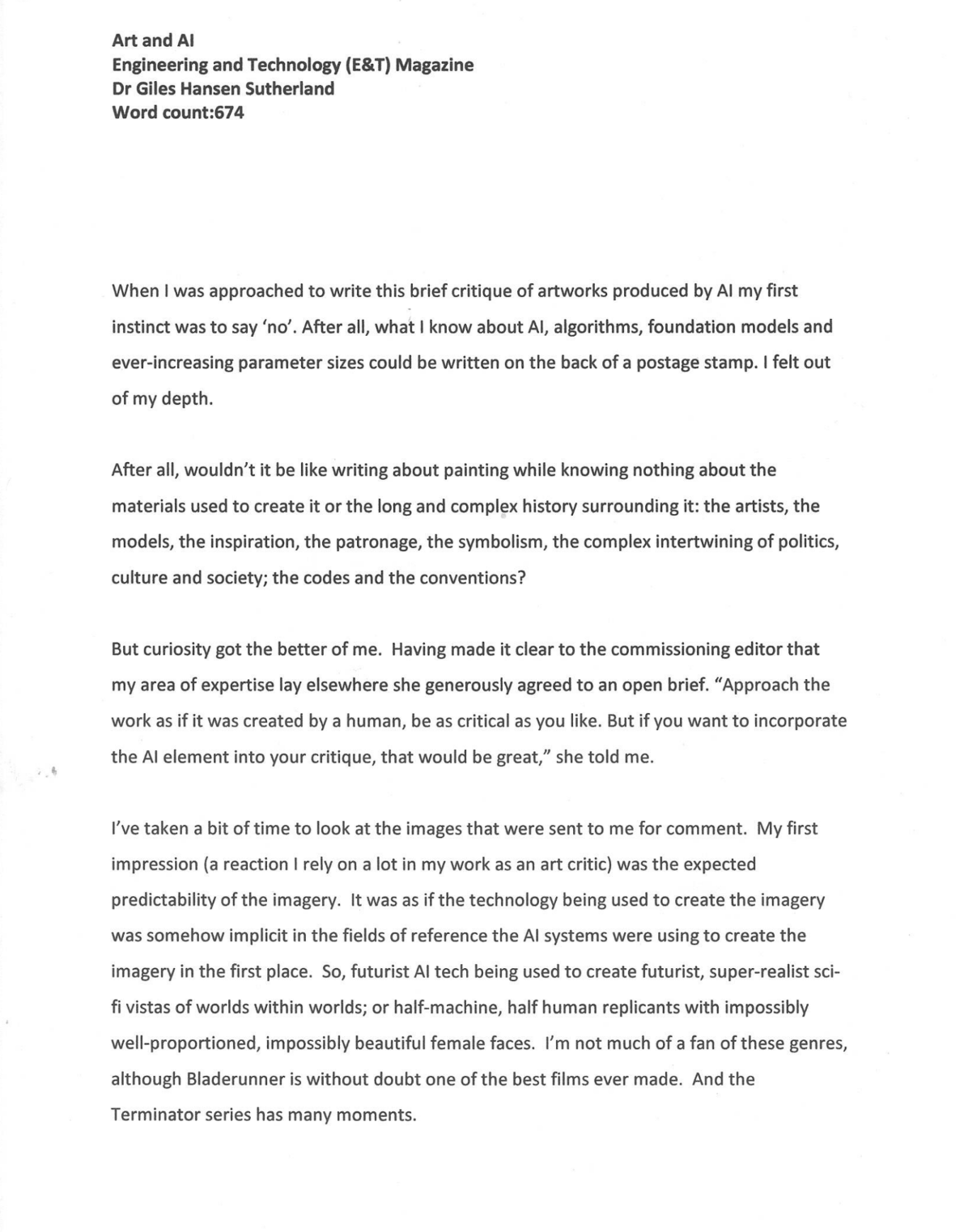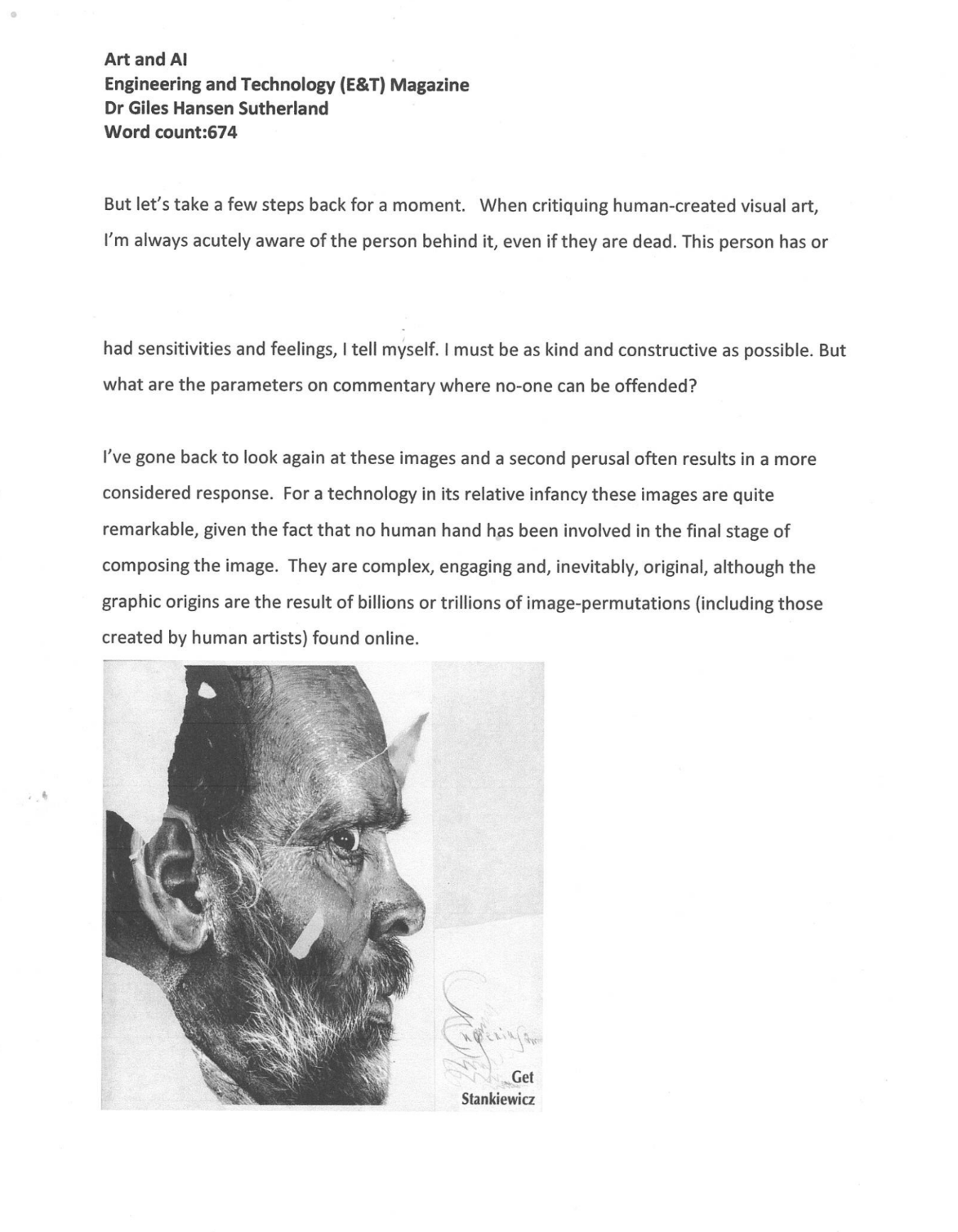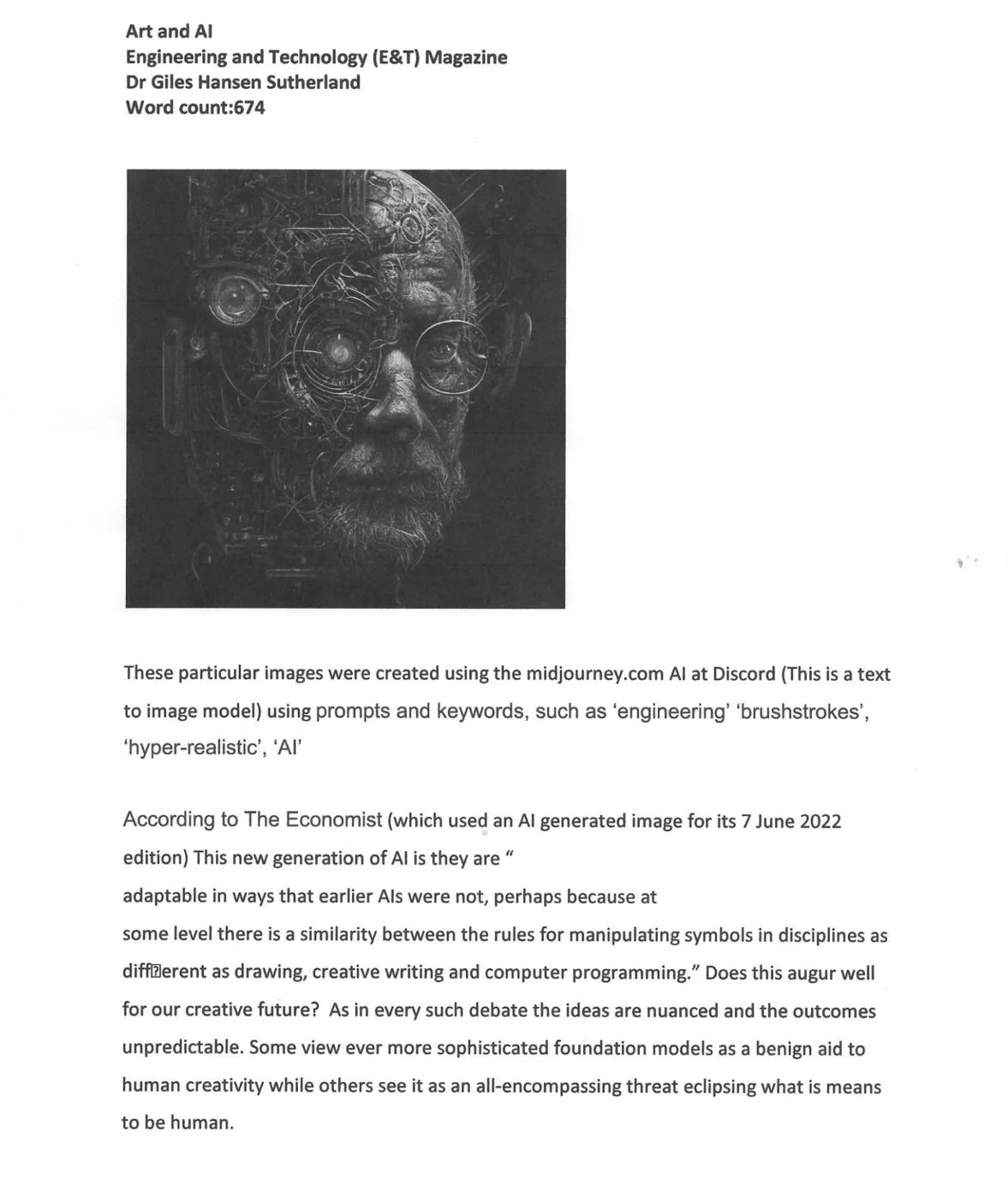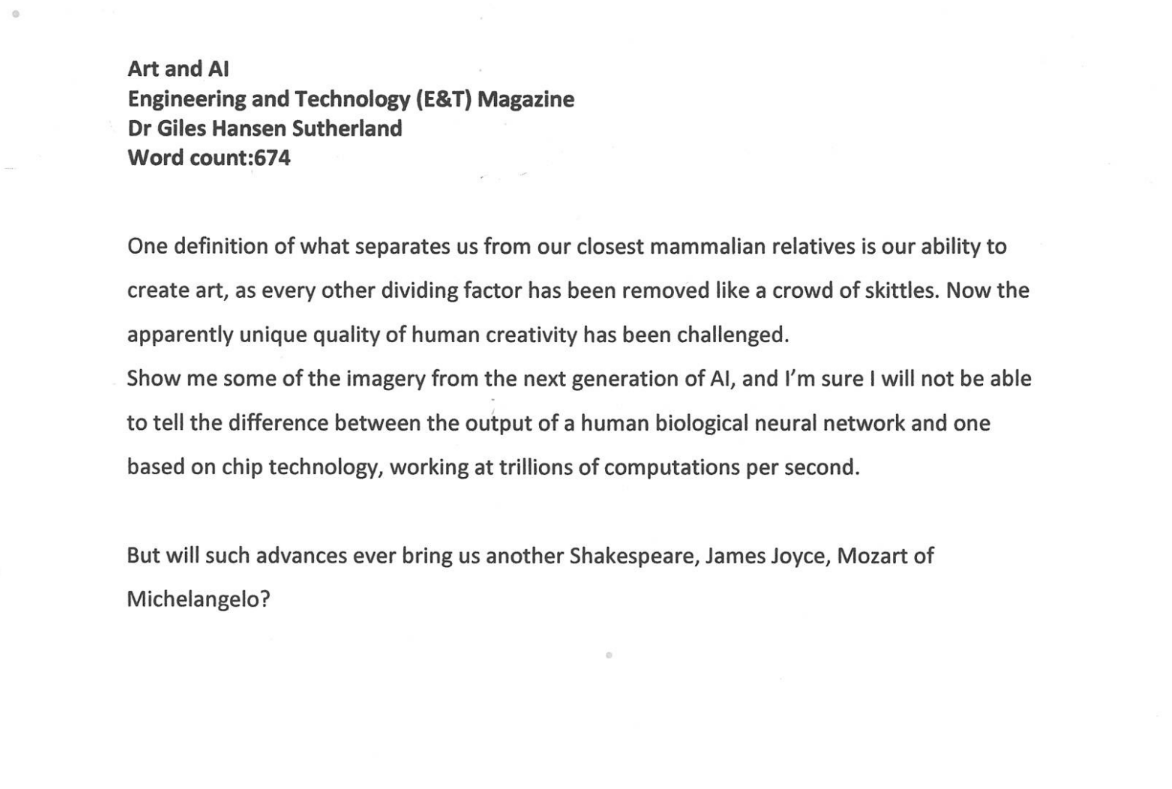Engineering & Technology (E&T) Magazine | Wednesday February 1 2023
Art and AI
When I was approached to write this brief critique of artworks produced by AI my first instinct was to say 'no'. After all, what I know about AI, algorithms, foundation models and ever-increasing parameter sizes could be written on the back of a postage stamp. I felt out of my depth.
After all, wouldn't it be like writing about painting while knowing nothing about the materials used to create it or the long and complex history surrounding it: the artists, the models, the inspiration, the patronage, the symbolism, the complex intertwining of politics, culture and society; the codes and the conventions?
But curiosity got the better of me. Having made it clear to the commissioning editor that my area of expertise lay elsewhere she generously agreed to an open brief. "Approach the work as if it was created by a human, be as critical as you like. But if you want to incorporate the AI element into your critique, that would be great," she told me.
I've taken a bit of time to look at the images that were sent to me for comment. My first impression (a reaction I rely on a lot in my work as an art critic) was the expected predictability of the imagery. It was as if the technology being used to create the imagery was somehow implicit in the fields of reference the AI systems were using to create the imagery in the first place. So, futurist AI tech being used to create futurist, super-realist sci-fi vistas of worlds within worlds; or half-machine, half human replicants with impossibly well-proportioned, impossibly beautiful female faces. I'm not much of a fan of these genres, although Bladerunner is without doubt one of the best films ever made. And the Terminator series has many moments.
But let's take a few steps back for a moment. When critiquing human-created visual art, I'm always acutely aware of the person behind it, even if they are dead. This person has or had sensitivities and feelings, I tell myself. I must be as kind and constructive as possible. But what are the parameters on commentary where no-one can be offended?
I've gone back to look again at these images and a second perusal often results in a more considered response. For a technology in its relative infancy these images are quite remarkable, given the fact that no human hand has been involved in the final stage of composing the image. They are complex, engaging and, inevitably, original, although the graphic origins are the result of billions or trillions of image-permutations (including those created by human artists) found online.
These particular images were created using the midjourney.com AI at Discord (This is a text to image model) using prompts and keywords, such as 'engineering' 'brushstrokes', 'hyper-realistic', 'AI'
According to The Economist (which used an AI generated image for its 7 June 2022 edition). This new generation of AI is they are "adaptable in ways that earlier AIs were not, perhaps because at some level there is a similarity between the rules for manipulating symbols in disciplines as different as drawing, creative writing and computer programming." Does this augur well for our creative future? As in every such debate the ideas are nuanced and the outcomes unpredictable. Some view ever more sophisticated foundation models as a benign aid to human creativity while others see it as an all-encompassing threat eclipsing what is means to be human.
One definition of what separates us from our closest mammalian relatives is our ability to create art, as every other dividing factor has been removed like a crowd of skittles. Now the apparently unique quality of human creativity has been challenged.
Show me some of the imagery from the next generation of AI, and I'm sure I will not be able to tell the difference between the output of a human biological neural network and one based on chip technology, working at trillions of computations per second.
But will such advances ever bring us another Shakespeare, James Joyce, Mozart of Michelangelo?



